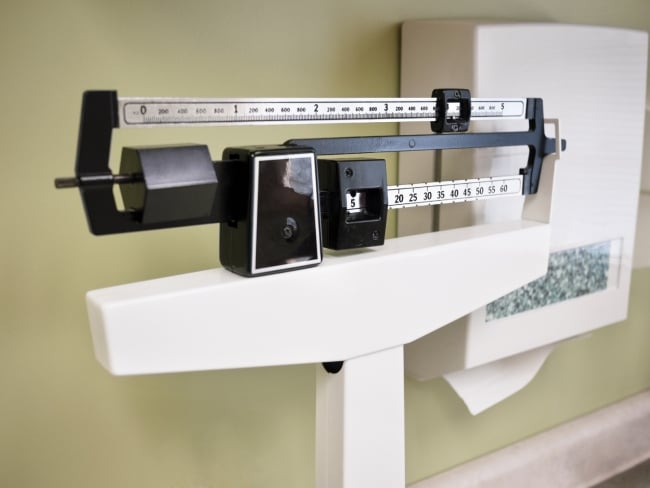You have /5 articles left.
Sign up for a free account or log in.

iStock
It’s increasingly common for colleges and universities, like other businesses, to offer the employees they insure incentives for staying healthy. And that makes sense; experts agree it’s a lot cheaper to treat illnesses earlier rather than later, or to prevent them altogether. But instead of offering “carrots” to its employees for seeking preventive care, Pennsylvania State University starting this fall is opting for the “stick,” imposing a $100 monthly surcharge on those who don’t meet new health requirements.
Perhaps unsurprisingly, Penn State’s “Take Care of Your Health” initiative has some faculty up in arms.
“I care about my health – I try to exercise every day and I eat pretty well,” Matthew Woessner, professor of political science at the Harrisburg campus. “But I resent that my employer requires that I submit to medical exams, essentially. There’s a fine line between encouraging employees to be healthy and requiring them to comply with health screenings.”
Larry Backer, a professor of law and past Faculty Senate president at Penn State’s main campus in University Park, agreed.
“The coercive feature is novel, at least at Penn State, though program administrators tried hard to mask it in the language of choice and consequences,” he said, noting the Senate wasn't consulted on the plan.
In addition to publishing a web page, Penn State mailed employees brochures detailing what it says is part of a strategic plan to better control health care costs. By November, faculty and their spouses or domestic partners covered by university health care must complete an online wellness profile and physical exam. They’re also required to complete a more invasive biometric screening, including a “full lipid profile” and glucose, body mass index and waist circumference measurements. (Mobile units from the university’s insurance company, Highmark, will visit campuses to perform these screenings.)
Employees and their beneficiaries who don’t meet those requirements must pay the monthly insurance surcharge beginning in January.
“It is important to note that screening results are confidential and will not be used to remove or reduce health care benefits, nor raise an individual’s health care premium,” a university announcement reads. “The results only are for individual health awareness, illness prevention and wellness promotion.”
Reidar Jensen, a spokesman for the university, said in an e-mail that Penn State’s health care insurance is self-funded, so the “more proactive we can be in managing our health, the healthier our employees, the lower our shared insurance costs and the more efficient our operations.”
Moreover, Jensen said, “during the last decade, many federal regulatory agencies have increasingly favored workplace wellness programs.” For example, he said, the Affordable Care Act raised the maximum levels of differential contributions toward health insurance based on participation in wellness programs. (Maximum rewards or penalties are now capped at 30 percent of the total cost of coverage, including both employer and employee contributions, up from 20 percent.)
While it’s clear that preventive care incentives result in savings and increased productivity (medical costs fall $3.27 on average for every dollar spent on wellness programs, and absentee day costs fall by about $2.73 for every dollar spent, according to one Harvard University study), it’s unclear both how widespread or effective punitive measures such as Penn State’s may be.
Mark Pauly, a professor of health care management and business economics at the University of Pennsylvania’s Wharton School, said he’d heard of a few other employers using the “stick” approach, but not for so “daunting” a menu of exams.
“The evidence does not really support the idea that this forced wellness helps, but employers these days are afraid to try anything else,” he said in an e-mail. “It is a mystery to me why Penn State would start irritating their workers.”
Jonathan Levin, a professor of economics at Stanford University and its School of Business who studies preventive care incentives, said businesses typically offer two kinds of incentives. Most popularly, businesses – including Stanford with its BeWell program – offer financial rewards for people who get physical exams and participate in health counseling. Other businesses offer direct incentives for healthy behavior, such as losing weight or quitting smoking.
Although not immediately clear, Levin suggested that Penn State’s plan could still fall into the first category if “framed” differently.
“The upshot of incentive programs is that people end up with different financial rewards,” he said. “If you think of the people who get less as the baseline, those who get more are getting a ‘bonus.’ If you think of the people who get more as the baseline, those who get less are getting a ‘penalty.’ ”
Nevertheless, it’s hard for some faculty to see the plan in a positive light.
Woessner said he thought Penn State was deliberately “burying the lede” in announcing the plan in the middle of July, when so many faculty are away and not able to voice their objections. Consequently, he said, “Take Care of Your Health” is likely here to stay (the requirements are annual).
Backer said didn’t suspect a “bad motive” on the part of the university. But because there was little faculty involvement in the shaping the plan, “it’s not clear that other alternatives might have achieved better aggregate health metrics and saved money.”

![First text message: "Yes?" Second message: "This is embarrassing to say, but law school isn't fair for us men, the women are always outperforming us at [sic]. It's obvious women are taking over the legal profession nowadays." Third text: "Who is this?"](/sites/default/files/styles/image_192_x_128/public/2024-09/Text_messages_law_2.jpg?itok=0QWP419B)







